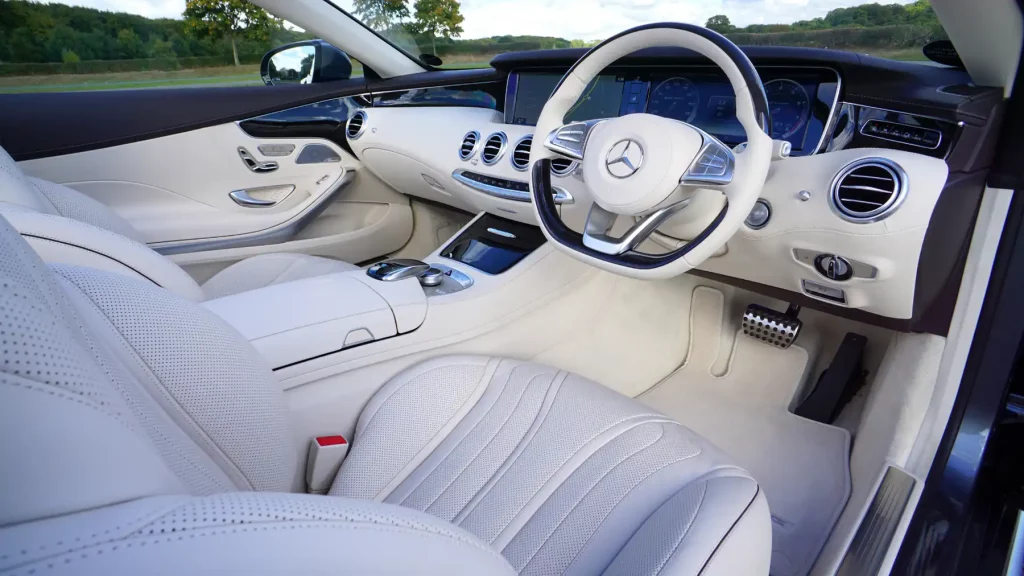Upon the first glimpse, the Mercedes Benz Vision EQXX concept does not yelp Mercedes Benz. For instance, its proportions resemble the Porsche, and the obvious absenteeism of a three-pointed star wearing the lattice does not assist in making it more familiar.
Mercedes Benz’s Vision EQXX
However, only Mercedes Benz’s R&D department has the technological and financial capacity to fabricate something like this. Having yoked the know-how from its Formula 1 and Formula-E team engineers, the Vision EQXX concept is, in theory, the globe’s most competent luxury electric vehicle. Fundamentally, one can drive the car from Berlin to Paris (1,056.7 kilometres) on a sole charge. As for the two-dimensional brand logo and the lattice-free front façade, Mercedes Benz says that they were striving to portray the face of its future electric vehicle design linguistic.
So, how did Mercedes Benz go around achieving this? By varying its battery chemistry. Merc decided that adjoining a bigger battery isn’t the most effective solution. They felt it was counterproductive.
A bigger battery enhances the weight, which, in turn, inhibits performance and devours most of the additional power to overcome hindrances brought about by its added weight. To solve this challenge, Merc has strived to make the battery more energy-efficient. The battery, which is no more than 100kWh, is close to three folds more effective, indicated Adam Allsop, Mercedes-AMG High-Performance Powertrains director. Additionally, it is 30% lighter and 50% smaller than the one etched into the EQS.
The brand managed to improve the car’s efficiency by inhibiting the weight of the car and giving it a Cd 0.175 drag coefficient, making it the prevalent title holder of the slickest Mercedes ever. The range is also enhanced by the prevalence of 117 solar cells mounted on the car’s roof.
However, according to Mercedes Benz, the solar cells can only add around 25km to the comprehensive range, on a single day, under idyllic weather conditions. Mercedes Benz hasn’t revealed any specifications on just how they managed to augment battery chemistry, suffice to mention that it utilizes enhanced silicon content and parcels more energy per anode.
The chassis is fabricated out of lightweight material by Merc’s F1 team. Whilst the powertrain technology transmission from Merc’s F1 cars remains a fiddly proposition, given that it is still a petrol-powered hybrid motor, the brand is utilizing good use for the lightweight material utilized in their Constructors’ title-winning F1 cars. The significance to the car’s claimed efficiency figures, however, is still battery productivity. According to Merc, 95% of the battery’s energy makes its way to the wheels.
Within there is plenty of energy-consuming technology, not the slightest of which is a 47.5-inch touchscreen interface with 8k resolution that extends across the width of the dashboard. This is a Mercedes, after all, and cutting-edge technology is the foremost order of business, both within and without.
The screen also gets a 3D navigation display and an advanced voice assistant system that learns your behaviour over time. Not threatening at all. The navigation system will allow for a ‘seamless zoom function’ from satellite view down to 10 metres overhead the surface level.
Despite the car being a purely conceptual model at present, Mercedes, which managed to fabricate the foremost prototype in a shocking 18-month time period, stated that the technology utilized here will form the foundation for all their imminent electric vehicle technology.
This makes complete sense given that the future of car brands will be recognised, marginally, by how effectively they can influence their battery technology. However, Mercedes Benz stated that its efficiency figures are grounded in reality and are based on real-life traffic simulations. Like several legacy brands, Merc is going all-in when it comes to investing in electrical technology.
To come out on the topmost tier, not only will it have to channel colossal investments into its electronic vehicle programme (USD 47 billion will go towards Mercedes Benz’s electrification strategies by the next decade), it will have to utilize associated technology, aerodynamic design and battery density in a rigorous and tactical effort to make the best electric vehicles possible.
